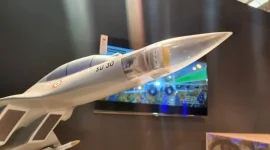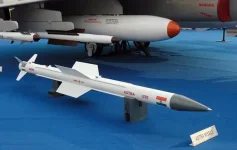- Views: 4K
- Replies: 23
The Indian Air Force (IAF) is set to launch a major modernization program for its Su-30MKI fighter fleet, known as the 'Super Sukhoi' program. This ambitious initiative, undertaken in collaboration with Hindustan Aeronautics Limited (HAL), aims to upgrade 84 Su-30MKI aircraft with advanced technologies, bringing them closer to fifth-generation capabilities.
The program will be executed in two phases. The first phase will focus on upgrading 84 Su-30MKIs with technologies derived from the Tejas Mk1A and MkII programs. This will include integrating advanced avionics, a new AESA radar, enhanced electronic warfare systems, and improved weapons integration. These upgrades will significantly enhance the aircraft's situational awareness, targeting capabilities, and survivability.
The second phase, anticipated around 2030, will involve upgrading another 84 Su-30MKIs with cutting-edge technologies from India's Advanced Medium Combat Aircraft (AMCA) program. This will include next-generation avionics, advanced sensors, data fusion capabilities, and potential stealth-adjacent features. This phase aims to further enhance the aircraft's performance and ensure its relevance in a rapidly evolving battlefield.
The AMCA program, India's indigenous fifth-generation fighter initiative, will serve as a critical technology source for the Super Sukhoi project. Key advancements from AMCA, such as advanced mission computers, a next-generation electronic warfare suite, and new cockpit displays, are expected to be adapted for the Su-30MKI upgrades.
With 270 Su-30MKIs currently in service, the IAF operates one of the largest fleets outside of Russia. However, with plans to retire older aircraft from 2035 onwards, the Super Sukhoi program is crucial for maintaining the fleet's combat effectiveness and ensuring its alignment with the IAF's future operational requirements. The program's phased approach allows for the gradual incorporation of advanced technologies, keeping the Su-30MKI relevant and potent until at least 2060.



